
Starting a new project can bring about mixed emotions.
You and your team are excited about this new challenge, but at the same time, you may be unsure about where to start because there is so much that needs to be done.
Before you get to work, you need to discuss project expectations and requirements.
A project kickoff meeting—the first meeting between your development team and the client—is the perfect opportunity to do just that.
In this article, we are breaking down the project kickoff meeting into 7 steps that will help you prepare for it and run it with ease.
Table of Contents
1. Prepare for the meeting
The first step towards ensuring that your meeting runs smoothly is thorough preparation.
They say that preparation is half the battle, and when it comes to project kickoff meetings, this statement rings particularly true.

Get unreal data to fix real issues in your app & web.
Being well-prepared can save you a lot of stress when the meeting rolls around.
Start with the basics. Decide who needs to attend the meeting and make sure that the meeting is actually relevant to everyone on your list in order to ensure they can actively participate in it.
Take a look at the image below to get an idea of what your meeting attendee list could look like.
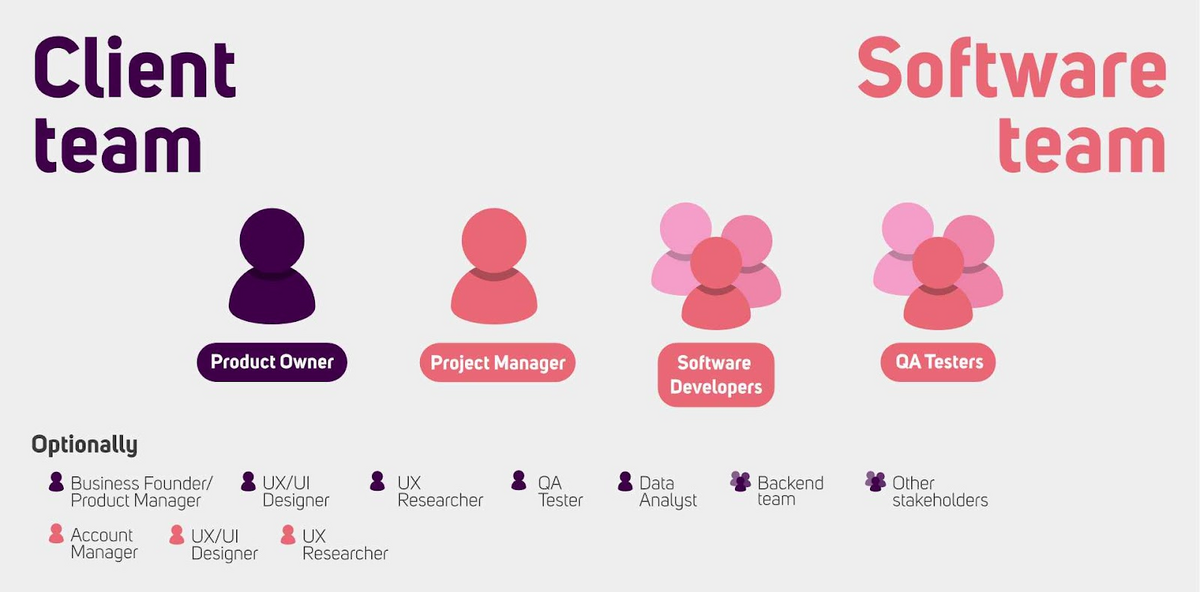
As you can see, you need to have your project manager, software developers, and QA testers in the project kickoff meeting.
After all, they are the ones that will be creating and testing the product.
Next, you need to start thinking about the topics you’re going to discuss.
Given that the purpose of the meeting is to get everyone involved on the same page about project details, there will be a lot of ground to cover.
That is why your project kickoff meeting needs to be structured. The best way to achieve that is by creating a detailed meeting agenda.
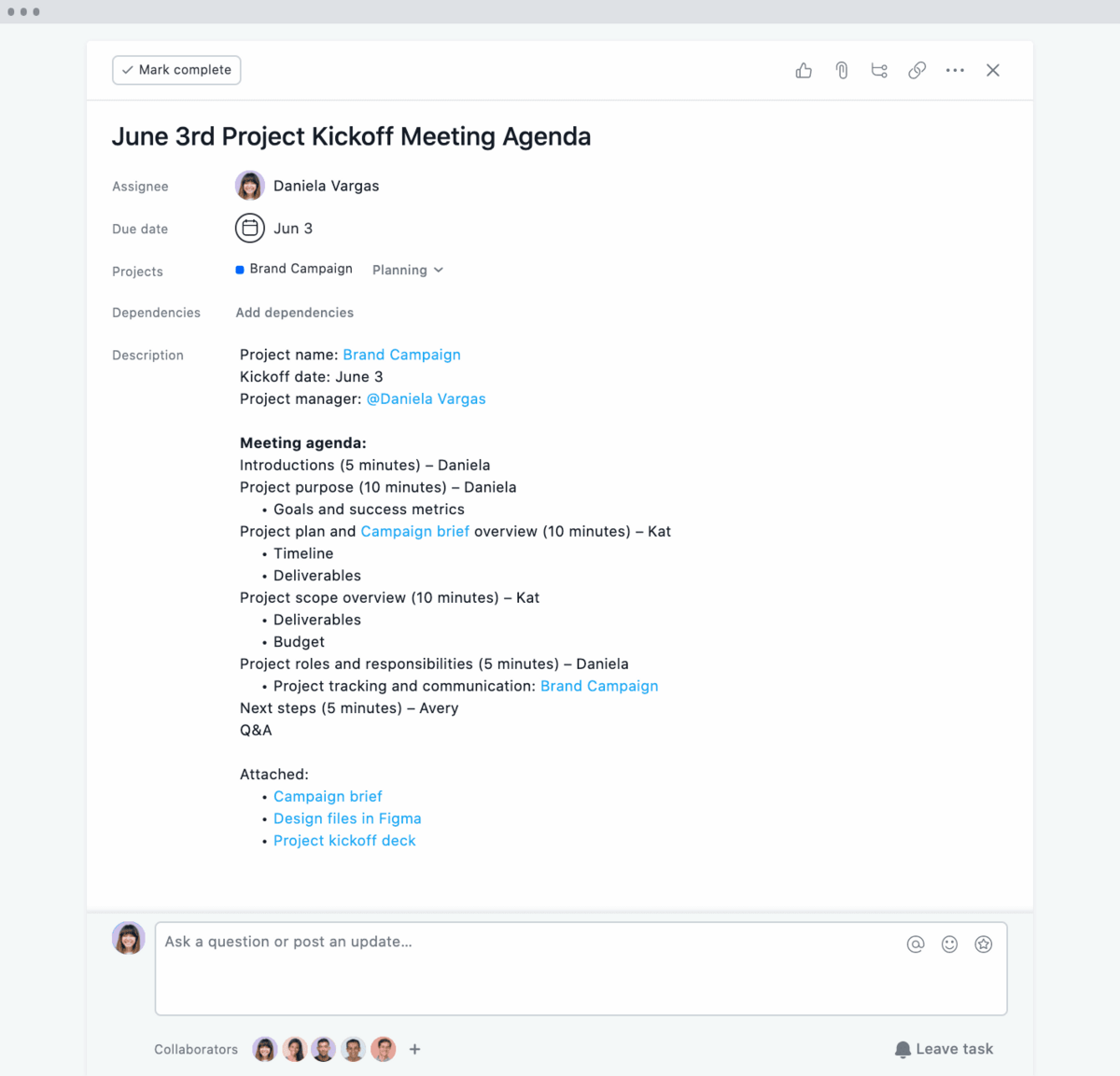
The image above shows an example of a project kickoff meeting agenda created with the help of the work management platform Asana.
This agenda provides a structured overview of the meeting from start to finish.
A well-established structure is going to help make sure you discuss pertinent topics in a logical order.
Even if you’re experienced in running meetings, don’t underestimate the importance of having an agenda.
According to The Doodle State of Meetings Report, 67% of professionals think that having a clear agenda is key for holding a successful meeting.
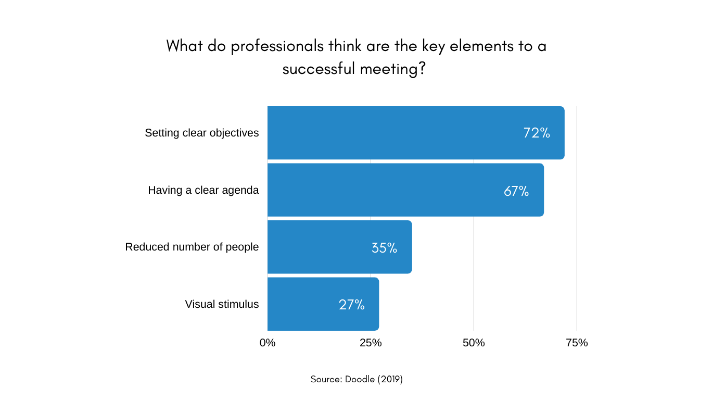
Having an agenda isn’t only helpful during the project kickoff meeting—it can also be a useful tool for your team to prepare ahead of it.
We recommend sending out the agenda to all participants at least a couple of days prior to the kickoff meeting. This will help them participate in the meeting with confidence.
2. Make time for introductions
As we’ve already mentioned, the project kickoff meeting is the first meeting between your team, the client, and external stakeholders.
Therefore, it is only natural to open the meeting with a short introductions session.
Brett Harned, a digital project management consultant at Digital PM Consulting, believes that making time to introduce the client team and the project team to one another is key to the success of a project kickoff meeting:
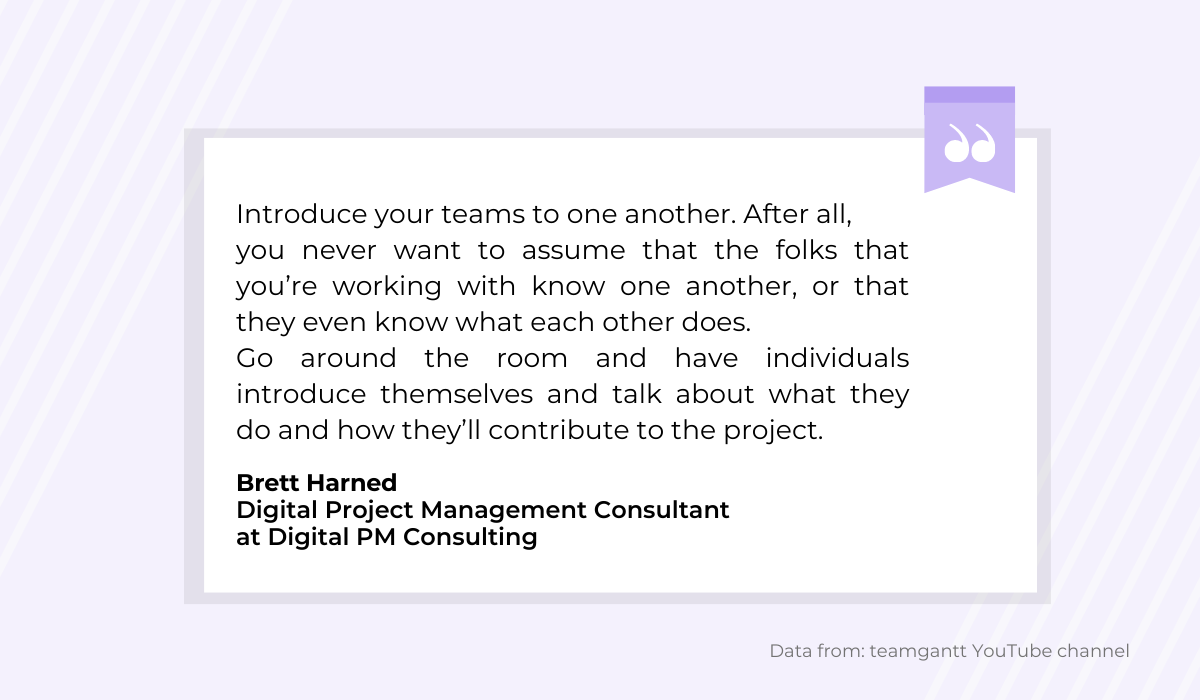
Reserving some time for introductions at the beginning of the project kickoff meeting is going to allow everyone to understand what each other’s roles in the project are.
As a result, both teams will know exactly who they can turn to if they have questions or need clarification during the project.
However, it might not be enough for everyone to just go around the table and share their name and professional background, especially if the team working on the project is large.
The point of making time for introductions is to ensure everyone involved feels comfortable working with each other.
This can be achieved with the help of icebreakers.
Icebreakers are a simple way to relieve tension and help meeting participants overcome the feelings of stress and anxiety that can arise from working with new people.
Let’s take a look at some of the benefits of including icebreakers in your project kickoff meeting agenda.
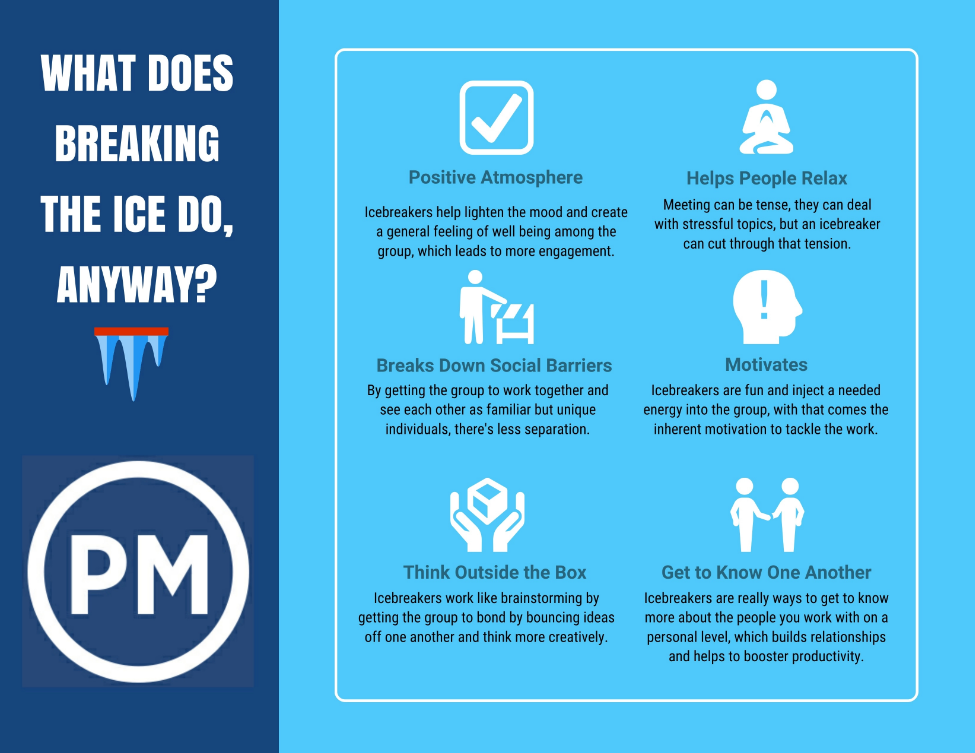
As you can see, taking a few minutes at the beginning of your kickoff meeting to let all participants share a bit about themselves can be beneficial for the project in the long run.
Icebreakers don’t just create a positive atmosphere during the meeting – learning about how other project contributors work can spark creativity within your own team.
3. Share the project purpose
Once the entire project team has had the chance to get to know each other, it is time to discuss the project purpose.
In short, a project purpose is a statement that sums up what the team is going to be doing and why that work is important.
Let’s see what Brett Harned, whom we’ve mentioned before, has to say about the importance of making the project purpose clear at the beginning of the project kickoff meeting:
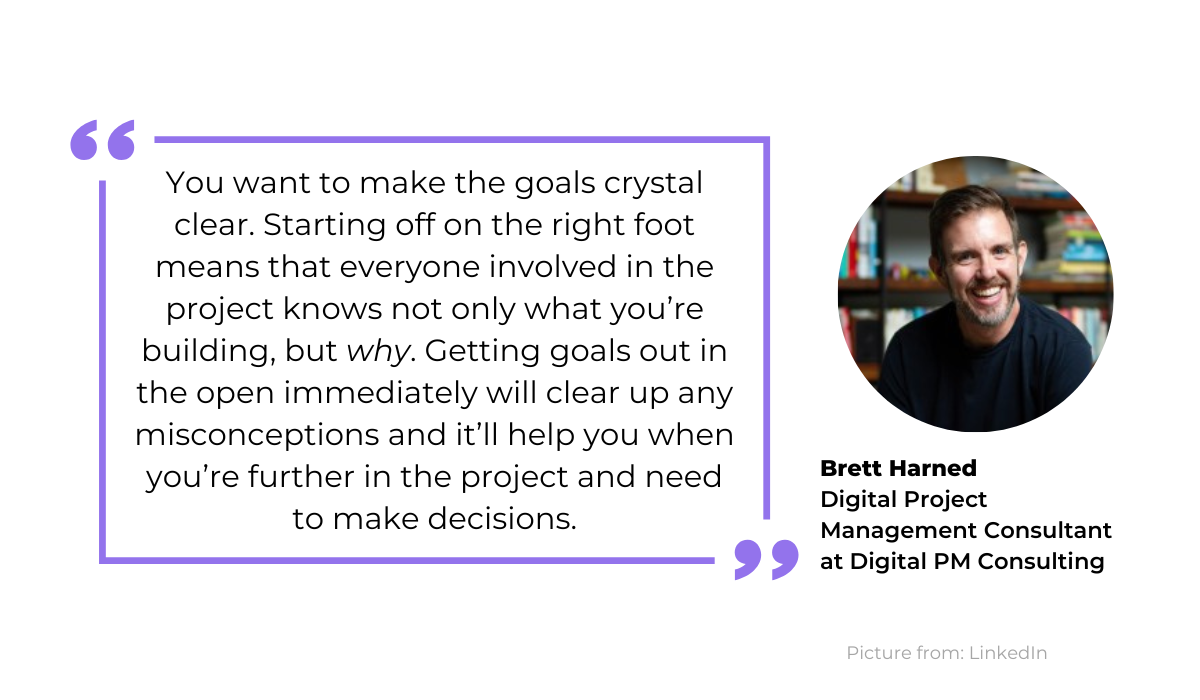
Here is an example of what a project purpose statement can look like:
The purpose of this project is to _____ through _____ because _____.
As you can see, the project purpose can be short, but that doesn’t make it any less important.
On the contrary—understanding the why of the project is essential for your team to be able to do great work.
In 2020, Censuswide conducted survey research on behalf of Asana to get a deeper understanding of how important communicating and understanding company goals is.
The results show that only 16% of surveyed employees feel that their company successfully communicates their organizational goals.
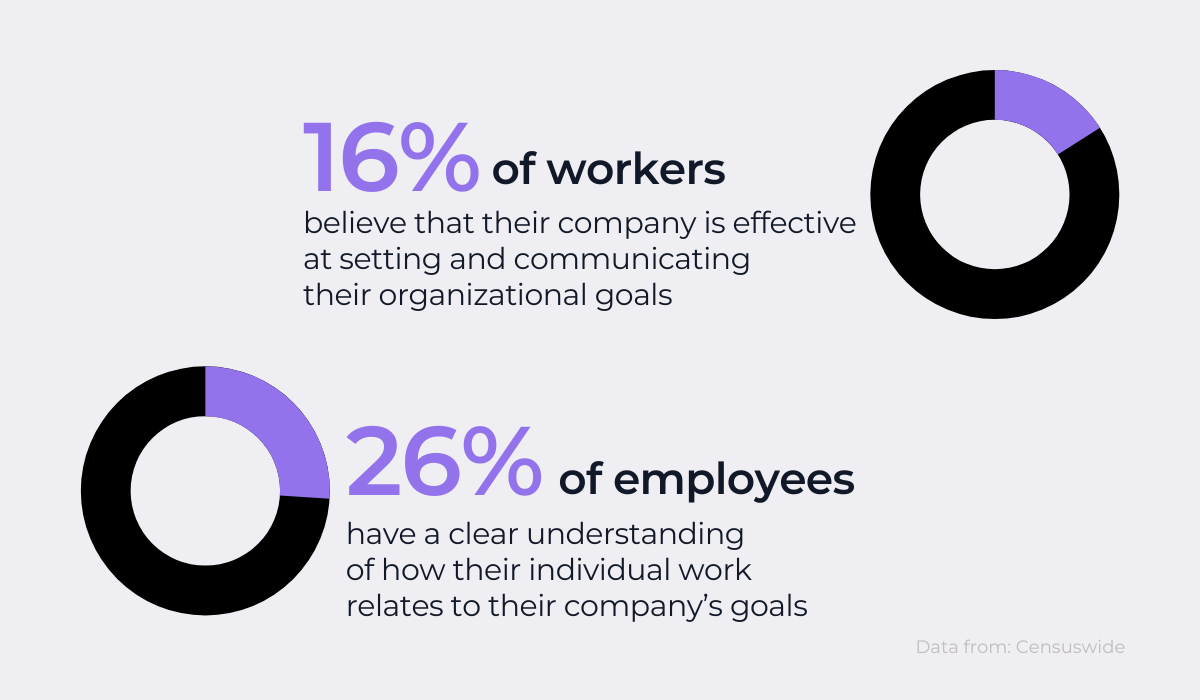
These findings show that employees don’t think it’s enough for their higher-ups to just tell them what to do.
They want to understand the bigger picture and how their involvement in the project is going to contribute to the end goal.
A Reddit user explains why they believe sharing the project purpose is so essential:
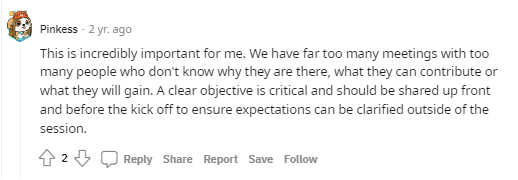
Here’s the takeaway: don’t underestimate what a clear project purpose statement can do for you.
If the team is aligned on the objective from the get-go, they are less likely to encounter hindrances along the way.
4. Clarify the project scope
Now that you’ve covered the objective of your project, i.e., the why, you need to focus on explaining what it is that needs to be done.
That is what the project scope is all about.
It defines the boundaries of your project, and it is much more extensive than the project purpose, as it has to cover the project goals, deliverables, tasks, costs, and deadlines.
All of this information is contained in a document called the project scope statement.
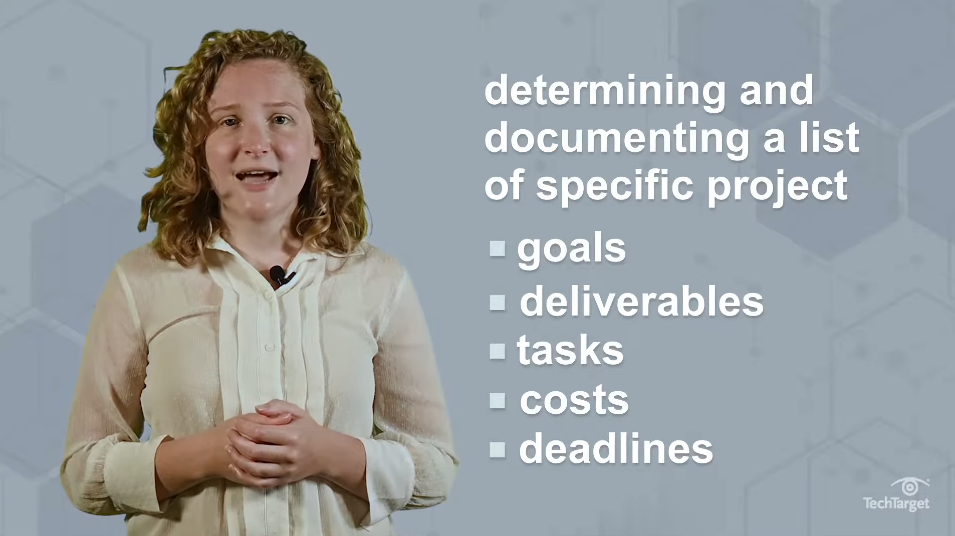
The purpose of the project scope is to define exactly what is and what isn’t part of the project.
Having this information as early on in the project as possible is key to the success of your team because then they know what they need to focus on.
Make sure to set aside enough time in your meeting agenda to discuss the project scope, as doing this can save you from complications, such as the so-called scope creep.
Scope creep is what happens when more deliverables are added without taking into account how they are going to affect your team’s ability to complete them in time and within the agreed-upon budget.
If we visualize the project as a circle, like in the image below, everything that is inside the circle is what the project is going to deliver.
Therefore, everything that is outside of the circle is also out of scope, which means it won’t be dealt with during the project.
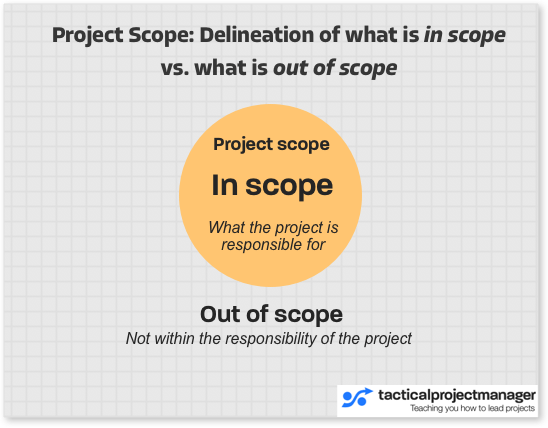
The issue arises when stakeholders request for unplanned, extra functionalities and features to be added to the project.
That is why Selva Pandian of DemandBlue advises setting project boundaries early on. The project kickoff meeting is a great opportunity to do that.
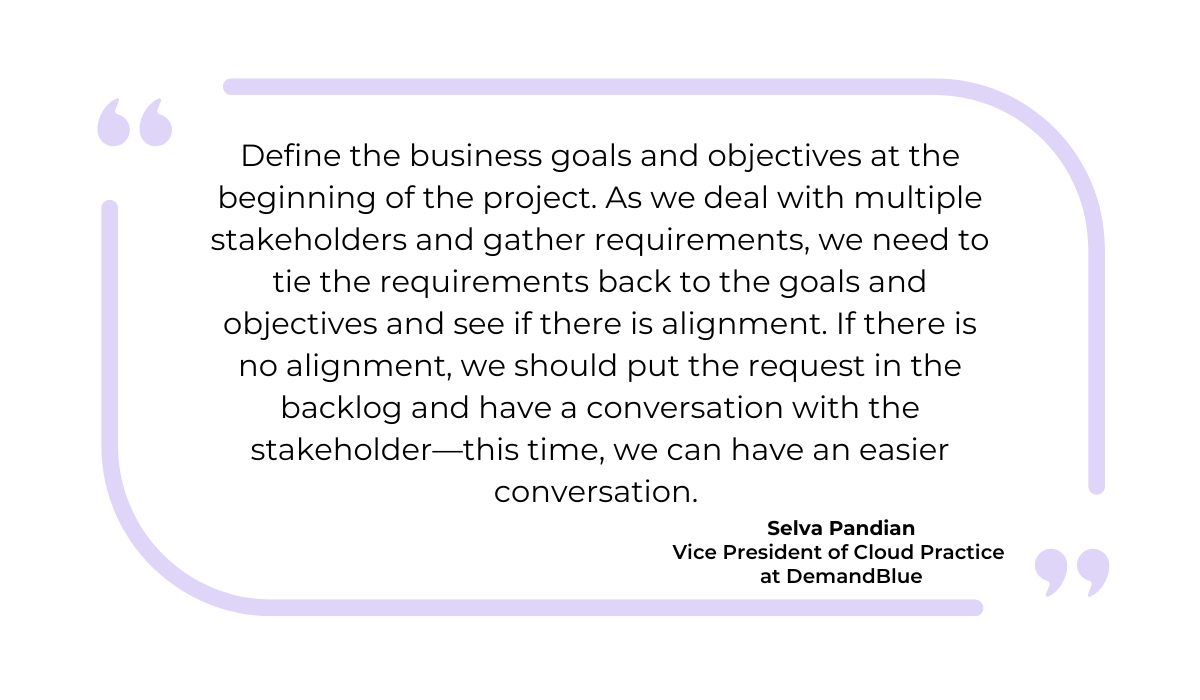
Of course, no project is set in stone, and it’s likely that some changes will need to be made down the line.
However, setting firm project scope boundaries at the earliest stages is going to help you stay on track and prevent over-extending your team.
5. Align on project roles
The introductions at the beginning of the kickoff meeting give everyone involved an opportunity to learn more about each other’s professional backgrounds.
However, in order to make sure your project runs smoothly, you need to define and distribute project roles and responsibilities properly, too.
Being clear on the project roles provides clarity about the scope of responsibilities of each team member.
That way, there is no confusion or misunderstanding about which individual is in charge of which part of the project.
The way Phonexa’s president David Gasparyan sees it, projects are a group effort that requires everyone’s cooperation.
However, he recommends taking the time to delegate specific responsibilities to individual team members.
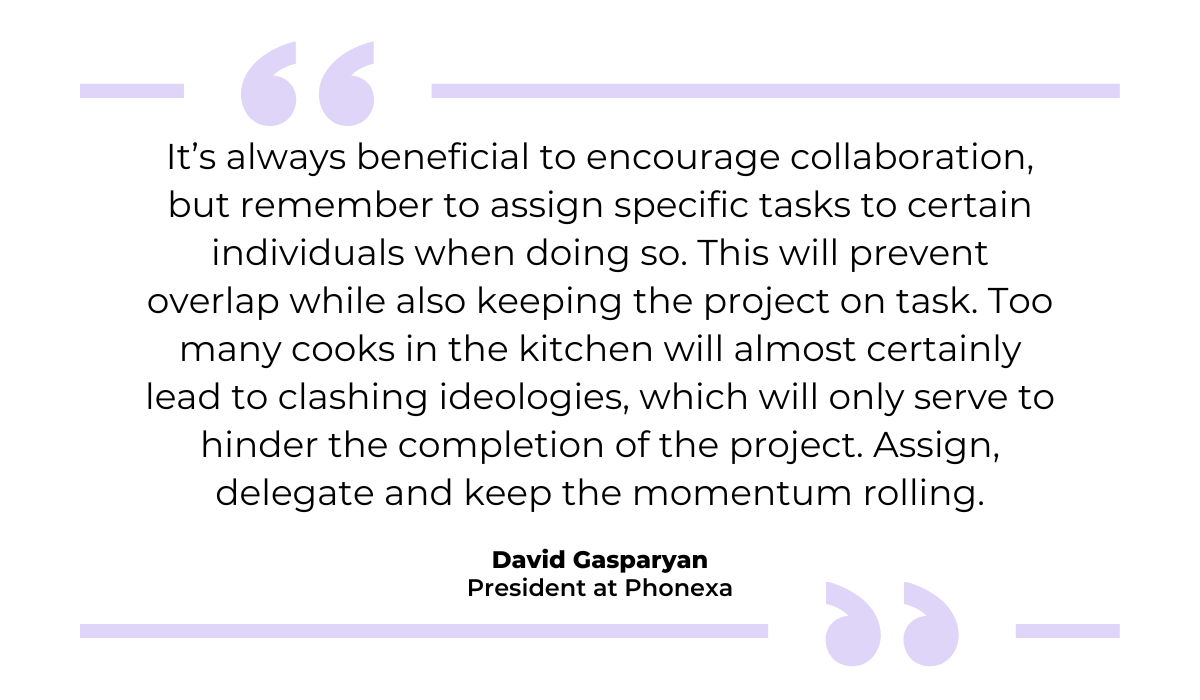
Assigning responsibilities to individuals on your team encourages accountability.
When they know exactly what their role in the project is, your team members also understand that it is their responsibility to meet the expectations and deliver results.
With a variety of project responsibility models out there, it can be difficult to decide how to assign roles and tasks within your team.
Apple created its own management technique known as the directly responsible individual, DRI for short.
The way it works is, the project manager assigns the role of a DRI to a team member of their choice.
They are responsible for a specific task and are expected to ensure that it is carried out successfully. If something goes awry, they are expected to take accountability for it.
A former Apple employee took to Quora to answer how well she thinks the DRI concept works:
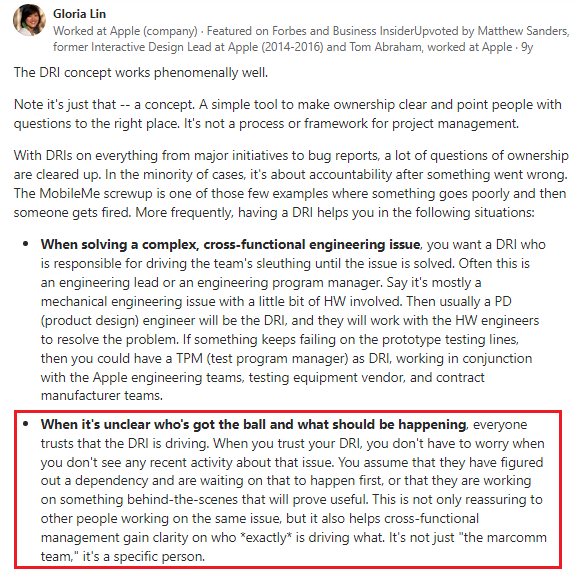
Depending on the scope of the project, you can assign as many DRIs as you believe is necessary to ensure that your team’s work on the project runs smoothly.
By implementing this concept, you are providing your team members with clarity about task ownership while encouraging accountability.
6. Discuss how you will communicate
No project is a one-person job. You need your entire team to work together in order to deliver results, so open communication and collaboration are essential.
We recommend you make time during your project kickoff meeting to discuss which communication tools you will use.
A survey conducted by The Project Management Institute has shown that “the most crucial success factor in project management is effective communications to all stakeholders”.
In fact, one in five projects turns out to be unsuccessful due to ineffective communication.
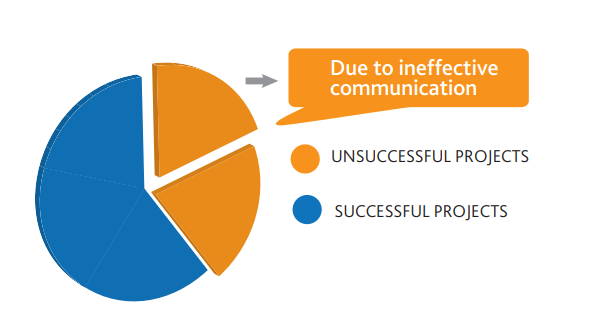
So, what can you do to prevent this from happening to your project? The answer is: find the communication and collaboration tools that are the right fit for your team.
They can help make sure that everyone is on the same page about deadlines, tasks, and their status.
For example, this project team is using a Trello board to assign tasks and their due dates to its members.
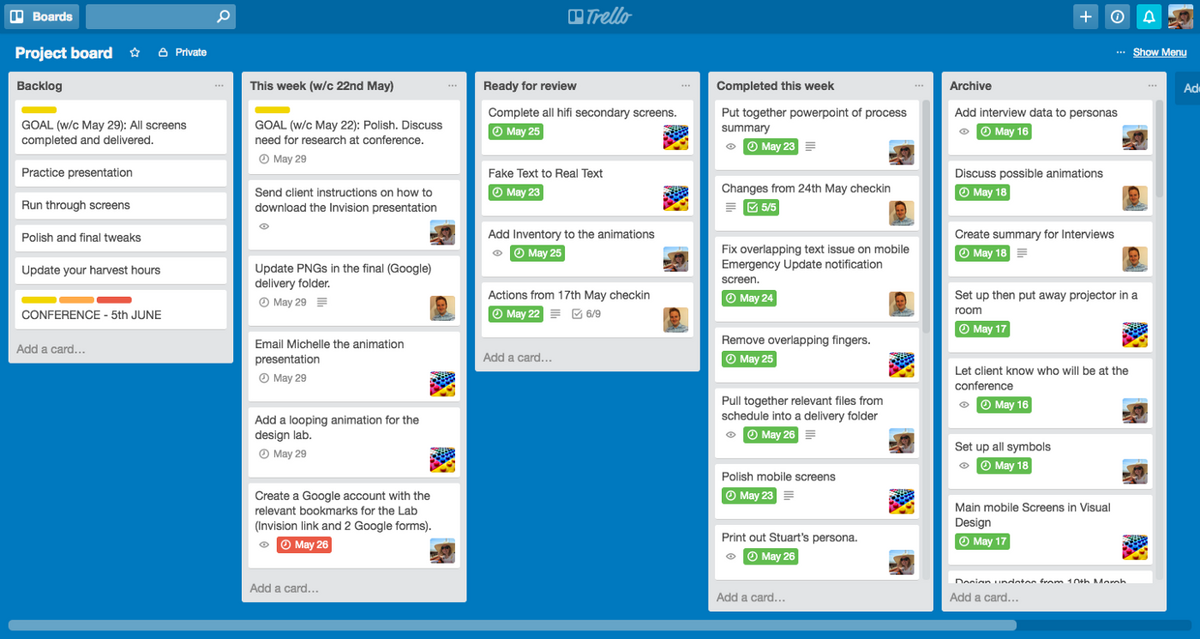
With the help of this tool, everyone involved in the project can check the status of tasks, as well as who is supposed to complete them.
That way, they can easily get in touch with the right person if they have questions or need updates. To make communication easy and seamless, Trello can be integrated with Slack.
Dean Jones, the CEO of NETOOZE® Cloud Computing, encourages using project management software to communicate:
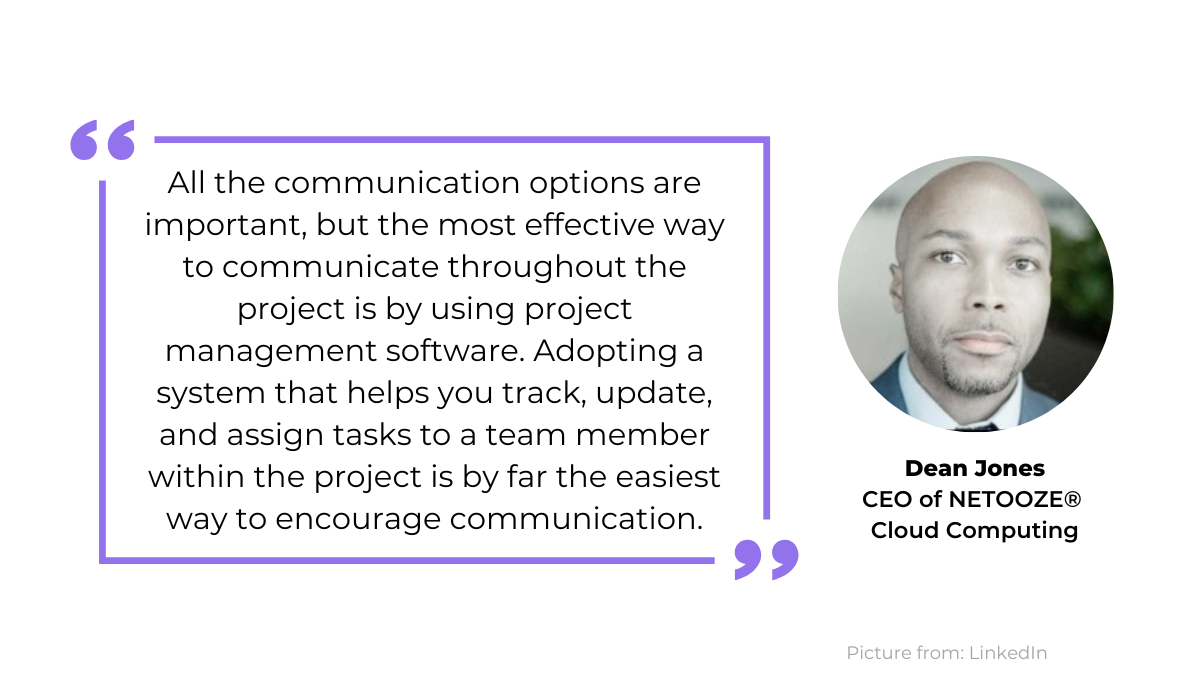
Take some time before the project kickoff meeting to do research on tools that you think might be a good fit for your team.
Some of the more popular tools include monday.com, Jira, Notion, and the previously mentioned Slack and Trello.
Remember, the purpose of using communication tools is to make collaboration easier.
That is why you should aim to limit the number of platforms you’ll be using to communicate during the project—you want to make it easy for your team to get in touch with others and find the information they’re looking for.
7. Block out some time for questions
After you have gone through the introductions and agreed on what needs to be done, who is going to do it and how, you may feel like you’ve covered everything.
However, that is likely not the case. In order to provide complete clarity about the project, make sure to block out some time at the end of the meeting for questions.
When you create an environment in which your team members feel comfortable asking questions, you signal to them that you advocate open communication.
Jim Detert, a professor at the Darden Graduate School of Business at the University of Virginia, explains that employees often don’t feel comfortable speaking up around their superiors:

It is important for you to actively encourage your project team to ask questions at the project kickoff meeting, as this can prove to be invaluable for the success of your project.
Even with the most thorough agenda, there’s still a chance that something was unclear or completely forgotten about.
Therefore, a designated Q & A session at the end of the meeting is the perfect opportunity for your team to bring up any concerns, doubts, or confusion they may have about the project.
According to a poll by CivicScience, 59% of the polled individuals stated that they don’t ask for help at work.

This discomfort with asking questions can lead to issues with the project further down the line.
But if you give your team a chance to speak freely about the concerns they have, you are going to reduce the likelihood of errors and misunderstandings about what needs to be done.
As a result, you are improving the odds of staying on track and meeting all the deadlines.
So, consider dedicating some time to your team members’ questions.
You may uncover issues you didn’t even think of, and you’ll get some insight into which areas you can make improvements in for your next project kickoff meeting.
Conclusion
If you decide to follow the 7 steps we have presented in this article, your project kickoff meeting should be a success.
Remember that thorough preparation is key to making sure the meeting is effective.
Your agenda should cover all key points you need to discuss, starting with team introductions at the beginning, followed by a discussion about the objectives and the scope of the project.
Don’t forget to determine roles, responsibilities, and how you’re going to achieve project goals together with the help of communication and collaboration tools.
Lastly, make some time for questions before you end the meeting – you never know what valuable insights your team might provide.




